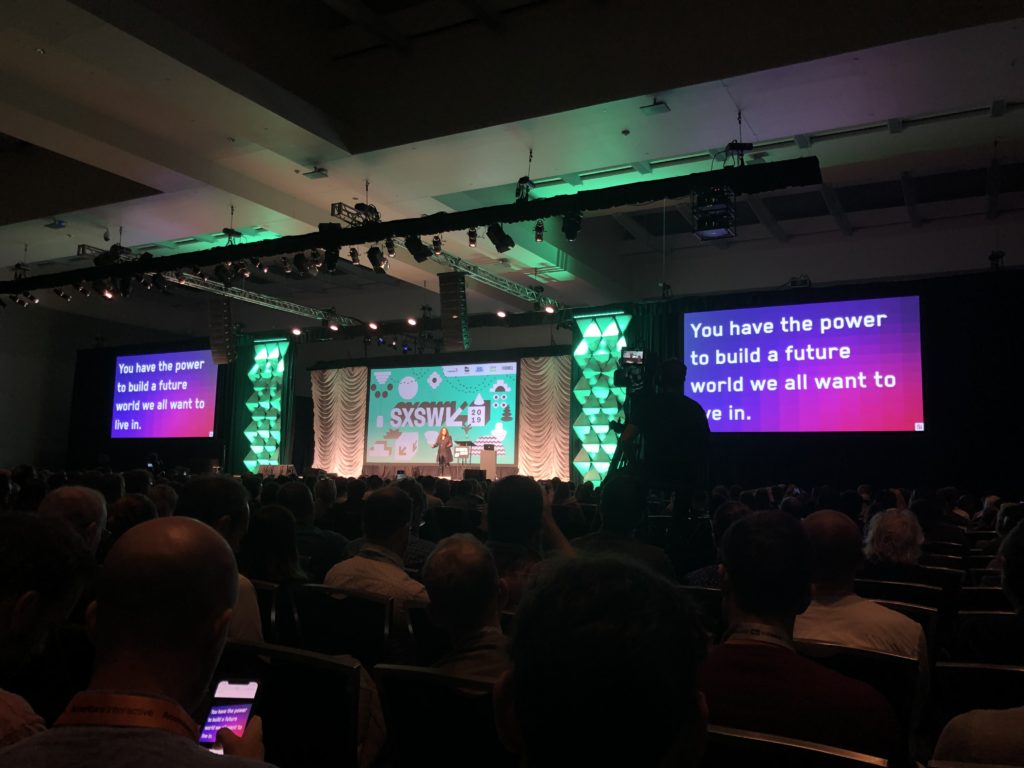It’s 2026. Hundreds of tiny sensors are observing your every gesture, and microphones are listening to your every command.
The things around you respond like a robot orchestra as a virtual assistant feeds you personalized advice on everything from health and wellness to financial planning, all in real time.
You head to a restaurant where the menu is displayed digitally through your AR glasses, and recommendations are provided based on your sleeping patterns, activity, and fitness goals, as well as your personal genetics and microbiome. Out comes a 3D-printed sushi roll that contains precisely the nutrients you need and the flavors you love.
Such a future seems almost inevitable from the many talks and exhibitions encountered at last week’s South by Southwest festival in Austin, TX. Born as a music festival in the 1970’s, SXSW has evolved to cover every imaginable topic that stands at the intersection of creativity, technology, industry, and culture. It draws forward-looking thinkers and creators from across the globe to explore the very cutting-edge of where we are today, and what’s possible as we push into the future.

If there was one consistent theme in 2019, it was the blurring of lines between physical and digital, and the increasing demand for the kind of immersive, interactive experiences it is now possible to create.
There are different ways of thinking about these line-blurring experiences. I’ll touch on three current trends: virtual reality, experiential marketing, and multilinear storytelling.
Virtual Reality
The Virtual Cinema ballroom featured a host of content producers giving audiences a first look at short stories, films, and games experienced entirely through VR. Two that I found particularly interesting were the short animation Gloomy Eyes and first-person sci-fi game Eleven Eleven. In experiences like these, we’re finally beginning to see some of the promise of VR take shape.
In a conversation with Gary Radburn, head of VR technologies at Dell and highly demanded speaker on the topic, I asked what he thought was the key breakthrough that will be the watershed moment in VR. His response: “Two things. Full 360 degree movement without cables or heavy equipment strapped to our back (which we are achieving this year), and content that is so compelling it drives people into stores to buy headsets in droves.” Today, VR is largely relegated to trade show booths and consumer electronics expos, but we’re set for this field to explode in the next few years.

Experiential Marketing
Studies have confirmed that millennials value experiences over things, so it’s no surprise that the marketing industry has figured out how to capitalize on it. Amusement has always been a money maker, but instead of charging at the door, experiential marketing is about taking the fun out into the open public and creating a brand connection that is memorable and meaningful.
Last year, HBO put on an activation that made national headlines with its real-life Westworld experience. Giant Spoon, the production company behind the idea, came back this year with another highly talked-about experience for the final season of Game of Thrones. These immersive and interactive experiences are all about taking the audience into a world they’ve only seen digitally, and an immense level of thinking goes into making every sensory detail just right in order to transport your brain from the real world to the created one.
In an on-stage interview, Giant Spoon’s lead creatives talked about one of the benefits of experiential marketing: “You have the opportunity to move the customer through the whole funnel at once, from introduction to education to conversion, and even brand loyalty.”

Interactivity and User-controlled Storytelling
If you’ve seen Netflix’s Bandersnatch, you’ve taken place in an emerging experiment in interactive, multilinear storytelling. Already, software has been developed for scriptwriters to create branches of their story, and companies like CtrlMovie are offering films where the audience collectively decides what the characters will do at certain junctures in the story (while retaining some mystery, of course).
This experiment is largely a response to the changing nature of how we consume media. The internet has broken down the barriers of communication so that the old one-way platforms are giving way to two-way platforms, and content is finally catching up. Buzzfeed founder Jonah Peretti asked SXSW audiences to embrace the unique opportunities for engagement that is now possible with online media. “Involve your audience in the story,” he said, by offering ways for them to express their ideas and interests. By doing so, he argued, you create a story that is more relevant to them and that they feel they took part in creating. And that is ultimately about cultivating a relationship, which far exceeds any other metric in value.

It’s not possible to capture SXSW in a blog post. The buzz and bustle, the hundreds of brands and thousands of innovators coming from all over the world to share their latest ideas and technologies—it must be experienced. And that’s the point. SXSW is itself an immersive experience, and the user can choose his or her own journey from the endless number of events happening in a given day. The costs of such an excursion can mount pretty quickly, but I am one millennial who thought the experience was well worth it.